If you’re one of those people who love pink and also love houseplants, then the Pink Princess Philodendron is the plant for you! These beautiful plants are easy to care for, and with a little bit of knowledge, you can keep your Pink Princess Philodendron healthy and happy for years to come. Here are 9 tips you should know about Pink Princess Philodendron care:
How to take care of a Pink Princess Philodendron
The Pink Princess Philodendron is a beautiful and unique plant that requires special care. Here are 9 tips to keep your Pink Princess Philodendron healthy and happy:
Pink Princess Philodendrons prefer bright, indirect sunlight. Place your plant near a window where it will receive indirect light for best results. 1.
Water your Pink Princess Philodendron when the top inch of soil is dry to the touch. These plants like to be kept moist, but not soggy. 2.
Pink Princess Philodendrons are not heavy feeders, so you only need to fertilize them once a month during the growing season. 3. Use a balanced fertilizer and dilute it to half strength before applying it to the soil.
These plants are susceptible to root rot, so make sure the pot has drainage holes and that you are not over-watering. 4.
Pink Princess Philodendrons are not tolerant of cold temperatures, so keep them away from drafts and cool areas in your home. 5.
These plants can be propagated by stem cuttings. 6. Take a 4-6 inch cutting from a healthy plant and root it in moist soil.
7. Pink Princess Philodendrons are susceptible to pests such as aphids and mealybugs. Inspect your plant regularly and treat with an appropriate pesticide if necessary.
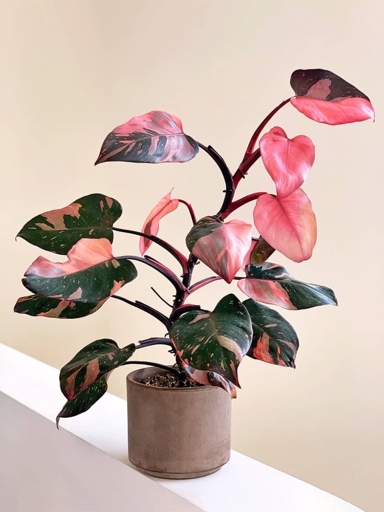
These plants can be susceptible to fungal diseases such as powdery mildew and leaf spot. Treat with a fungicide if necessary. 8.
Pink Princess Philodendrons are relatively easy to care for, but they do require some special attention. With a little TLC, your plant will thrive and provide you with beautiful foliage for years to come. 9.
Pink Princess Philodendron Needs A Lot of Light To Thrive
If you’re looking for a plant that will add a touch of elegance to your home, the pink princess philodendron is a great option. This beautiful plant is known for its pink and green leaves, which can add a splash of color to any room.
In fact, it needs quite a bit of care to thrive. Here are some tips to keep in mind if you’re thinking of adding a pink princess philodendron to your home: However, the pink princess philodendron is not a low-maintenance plant.
Pink princess philodendrons need a lot of light to thrive. If you don’t have a lot of natural light in your home, you may need to supplement with artificial lighting. 1.
These plants also need to be watered regularly. Allow the soil to dry out slightly between waterings, but don’t let it get too dry. 2.
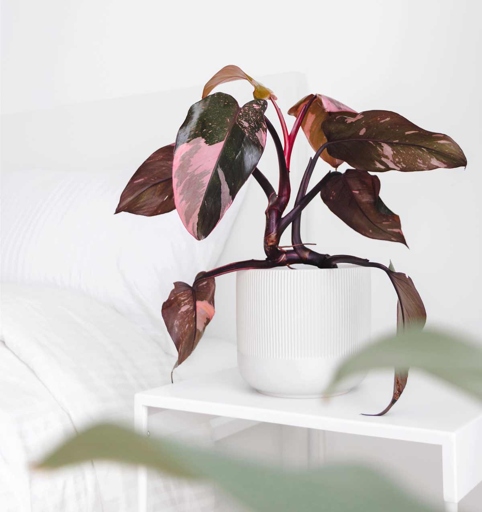
3. Pink princess philodendrons are susceptible to a variety of pests, so it’s important to inspect your plant regularly and take action if you see any pests.
4. If you want to add more pink princess philodendrons to your collection, this is a great way to do it. These plants can be propagated from stem cuttings.
Pink princess philodendrons are typically sold in pots. 5. When you’re ready to transplant your plant, choose a pot that is slightly larger than the one it came in.
By following these tips, you can help your pink princess philodendron thrive. With a little bit of care, this beautiful plant can add a touch of elegance to your home.
Soil
These plants prefer a well-draining, slightly acidic soil. Soil is an important aspect of plant care, and pink princess philodendrons are no exception. A mixture of peat moss, perlite, and vermiculite is a good option.
When watering pink princess philodendrons, be sure to use lukewarm water. Allow the soil to dry out between waterings, and never let the plant sit in water. Fertilize monthly during the growing season, using a half-strength fertilizer.

A mixture of peat moss, perlite, and vermiculite is a good option. A well-draining, slightly acidic soil is best. Pink princess philodendrons are not particularly picky about soil, but it is still important to choose the right type.
By following these simple tips, you can ensure that your pink princess philodendron will thrive. When watering pink princess philodendrons, be sure to use lukewarm water. Allow the soil to dry out between waterings, and never let the plant sit in water. Fertilize monthly during the growing season, using a half-strength fertilizer.
Watering
When it comes to watering your Pink Princess Philodendron, it’s important to keep a few things in mind. Second, be sure to use lukewarm water, as cold water can shock the plant and cause leaves to drop. First, this plant prefers to be on the drier side, so be sure to allow the soil to dry out completely between waterings. Third, be sure to water at the base of the plant, rather than getting the leaves wet.
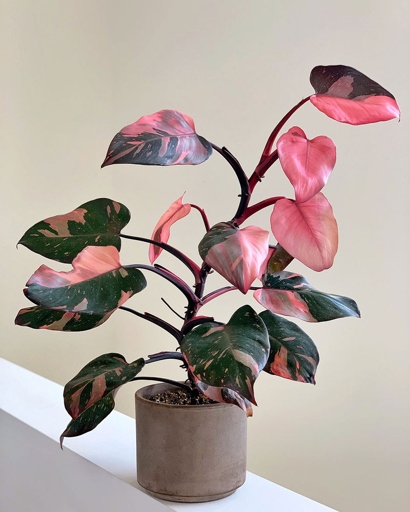
With these tips in mind, you should have no problem keeping your Pink Princess Philodendron healthy and happy!
Temperature And Relative Humidity
These plants like it warm and humid, so as long as you keep your home warm and humid, they should be happy. Just make sure not to let the temperature drop below 60 degrees or the relative humidity fall below 50%, as this can cause the leaves to drop. The ideal temperature for pink princess philodendron is between 70 and 85 degrees Fahrenheit, and the ideal relative humidity is between 60 and 80%. When it comes to temperature and relative humidity, pink princess philodendron care is pretty easy. If you can’t provide these ideal conditions, don’t worry, these plants are pretty tough and can tolerate a wide range of conditions.
Fertilizing
Here are a few tips to keep in mind when fertilizing your plant: Fertilizing your Pink Princess Philodendron is an important part of keeping it healthy and vibrant.
Use a balanced fertilizer that is specifically designed for philodendrons. 1.
Fertilize your plant every two weeks during the growing season, and monthly during the winter. 2.
Be sure to follow the directions on the fertilizer package, as too much fertilizer can damage your plant. 3.

In this case, you can fertilize more often. 4. If you notice that your plant is starting to look pale or has yellow leaves, it may be a sign that it is not getting enough nutrients.
By following these tips, you can ensure that your Pink Princess Philodendron will stay healthy and beautiful for years to come.
Repotting
But don’t worry, you won’t have to keep it in that pot forever. When you bring your new Pink Princess Philodendron home, it will likely be potted in a small container. In fact, it’s best to repot your Pink Princess Philodendron every one to two years.
Here are a few tips to keep in mind when repotting your Pink Princess Philodendron:
Choose a pot that is only slightly larger than the current pot. A pot that is too large can lead to problems with root rot. 1.
Again, this will help prevent root rot. Use a well-draining potting mix. 2.
3. Be careful not to damage the roots when you are removing the plant from its current pot.
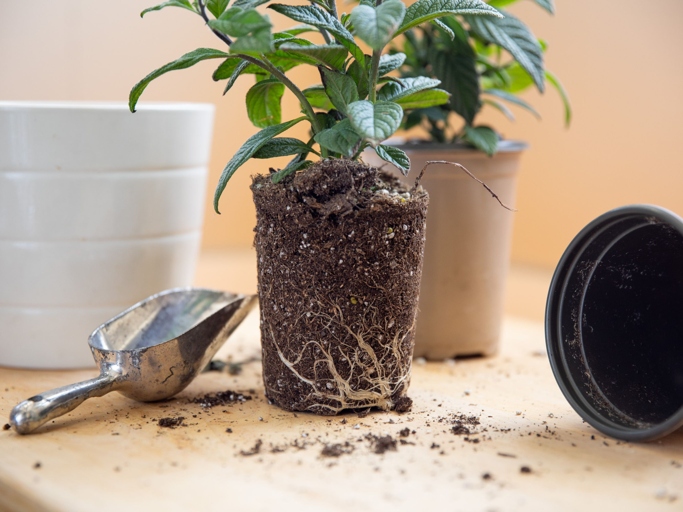
4. When you repot, be sure to lightly firm the potting mix around the roots.
Water the plant well after repotting. 5.
By following these simple tips, you can help ensure that your Pink Princess Philodendron thrives for years to come.
Support
Just be sure that the structure is strong enough to support the plant’s weight. They don’t require much in the way of staking or other support structures. However, if you want to give your plant a little extra support, you can use a trellis or other structure to help it climb. When it comes to support, pink princess philodendrons are pretty self-sufficient.

If you do decide to use a support structure for your pink princess philodendron, be sure to attach it securely to the pot. This will help prevent the plant from toppling over and damaging its leaves.
Pruning
Pruning your Pink Princess Philodendron is a great way to keep it looking its best. Here are a few tips to help you get the most out of your pruning:

Start by removing any dead or dying leaves. 1. These can be easily identified by their brown or yellow color.
Next, trim back any leaves that are significantly longer than the others. This will help keep your plant looking tidy. 2.
Finally, cut away any leaves that are damaged or diseased. 3. This will help prevent the spread of disease to healthy leaves.
Pruning your Pink Princess Philodendron is a great way to keep it looking its best. By following these simple tips, you can ensure that your plant stays healthy and looking great for years to come.
Pink Princess Philodendron Propagation
Gently insert the cutting and water it well. New leaves will sprout in about four to six weeks. Pink Princess Philodendron propagation is easy and can be done in water or soil. Change the water every few days to keep it fresh. To propagate in soil, fill a pot with a well-draining potting mix and make a hole for the cutting. To propagate in water, simply cut a stem with at least two nodes and place it in a jar or vase of water. Roots will form in about two weeks. Place the pot in a bright, indirect light location and keep the soil moist.
Common Pests And Diseases
Diseases such as root rot and leaf spot can be controlled with fungicidal sprays. Pests and diseases are common problems when growing philodendrons. The most common pests are aphids, mealybugs, and whiteflies. These pests can be controlled with regular applications of insecticidal soap or neem oil.
Philodendron Root Rot
Philodendron root rot is caused by a fungus that attacks the roots of the plant. Philodendron root rot is a serious problem that can kill your plant. The first step to preventing it is to understand what causes it. This can kill the plant if it is not treated. The fungus can be spread by water, soil, or even insects. Once the fungus has infected the plant, it will start to rot the roots.

This will help to prevent the fungus from getting started. There are a few things you can do to prevent philodendron root rot. If you see any of these signs, treat the plant immediately. Second, water your plant carefully. Third, keep an eye out for any signs of the fungus, such as yellowing leaves or brown spots on the roots. Avoid getting the leaves wet, as this can spread the fungus. First, make sure you plant your philodendron in well-draining soil.
Philodendron root rot can be a serious problem, but it can be prevented with a little bit of care. By planting in well-draining soil and watering carefully, you can help to keep your plant healthy and free from this dangerous fungus.
How to Treat Root Rot:
Root rot is a serious problem for philodendrons, and it can be difficult to treat. Once you’ve identified the problem, you need to take action to treat it. If you see yellowing leaves, wilting, or mushy roots, these are all signs of root rot. The first step is to identify the problem.
If they are black and mushy, you will need to trim them away. Be sure to disinfect your tools before and after trimming the roots. Once you’ve trimmed away the affected roots, you can replant the philodendron in fresh potting mix. The first step is to remove the plant from its pot and inspect the roots.

Be sure to follow the directions on the fungicide label carefully. You may also need to treat the plant with a fungicide to prevent the root rot from coming back.
Root rot can be a serious problem, but with proper care, you can treat it and keep your philodendron healthy.
Common Philodendron Pink Princess Growing Issues
If you’re thinking about adding a Philodendron Pink Princess to your indoor jungle, there are a few things you should know about caring for this beautiful plant. Here are 9 tips for Pink Princess Philodendron care:
Pink Princess Philodendrons like bright, indirect light. If you notice the leaves start to yellow or brown, that’s a sign that it’s not getting enough light. 1.
Use a balanced fertilizer and apply it according to the package directions. These plants are fast growers, so you’ll need to fertilize them regularly. 2.
Overwatering can lead to root rot, so be sure to err on the side of caution. Pink Princess Philodendrons are known for being finicky when it comes to watering. 3. Allow the top inch of soil to dry out before watering again.
Keep your Pink Princess Philodendron in a spot that stays between 65 and 80 degrees Fahrenheit. 4. These plants are native to tropical climates, so they prefer warm temperatures.
You can either provide them with a trellis or allow them to trail over the edge of a pot. Pink Princess Philodendrons are climbers, so they’ll need something to grab onto as they grow. 5.

These plants are relatively low-maintenance, but they will benefit from occasional pruning. 6. Trim back any yellow or brown leaves to encourage new growth.
Pink Princess Philodendrons are susceptible to a few different pests, including mealybugs, spider mites, and scale. If you notice any of these pests on your plant, you can treat them with an insecticidal soap or neem oil. 7.
Pink Princess Philodendrons are also susceptible to a few diseases, including root rot and leaf spot. If you notice any of these issues, you should take steps to correct the problem immediately. 8.
If you want to keep your plant compact, you can pinch back the tips of the vines. 9. With proper care, Pink Princess Philodendrons can grow to be quite large.
By following these 9 tips, you can ensure that your Pink Princess Philodendron will thrive.
Blackening And Drying of The Leaf Edges
If you notice the leaves on your Pink Princess Philodendron starting to blacken and dry at the edges, don’t panic! In this case, you should consult a professional. If the problem persists, it could be a sign of a more serious issue like root rot. This is usually just a sign that the plant is getting too much sun. Move it to a shadier spot and make sure to water it regularly.
Brown Spots on Leaves
If you notice brown spots on the leaves of your Pink Princess Philodendron, don’t panic! These spots are usually caused by too much sun exposure, and they can be easily fixed.
If the spots are small and not too dark, you can also try to lightly rub them off with a damp cloth. To get rid of brown spots on the leaves, simply move your plant to a spot that gets less sun.

If you notice the spots coming back, simply move your plant to a shadier spot. Once you’ve taken care of the brown spots, be sure to keep an eye on your plant and make sure it doesn’t get too much sun in the future.
Philodendron Leaves Twist And Curl
One of the most striking features of this plant is its leaves, which twist and curl in a variety of shapes. If you’re looking for a plant that’s both beautiful and easy to care for, the philodendron is a great choice.
While philodendrons are generally low-maintenance, there are a few things you can do to keep your plant looking its best. Here are 9 tips for caring for a philodendron:
Place your plant in a bright, indirect light. Too much direct sunlight can scorch the leaves. 1.
Allow the top inch of soil to dry out before watering. Overwatering can lead to root rot. 2.
Feed your plant once a month with a balanced fertilizer. 3.
Keep an eye out for pests, such as aphids and mealybugs. If you see any, treat them with an insecticidal soap or neem oil. 4.
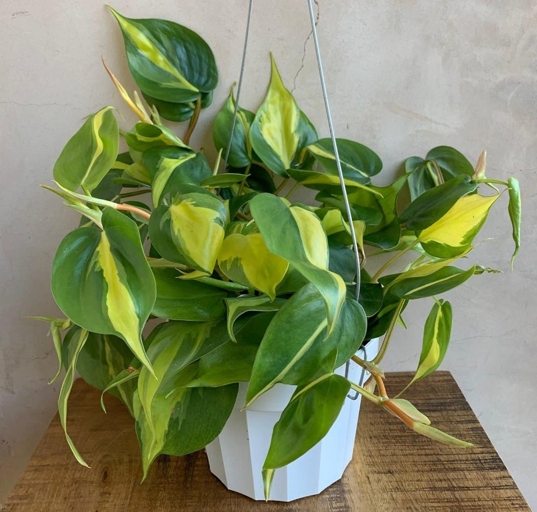
Prune your plant regularly to encourage new growth. 5.
If the leaves start to yellow, it could be a sign of too much fertilizer. Cut back on feeding and flush the soil with water to remove any excess fertilizer. 6.
7. If the leaves start to brown and curl, it could be a sign of too little water. Increase watering, but be sure not to overwater.
If your plant gets leggy, you can cut it back and propagate the stem cuttings in water. 8.
With proper care, your philodendron should thrive for many years. 9.
Philodendron With Yellow Leaves
While yellow leaves can be caused by a number of factors, including too much sun or water, it’s often a sign of nutrient deficiency. If you notice that your Philodendron’s leaves are turning yellow, it’s important to take action immediately.
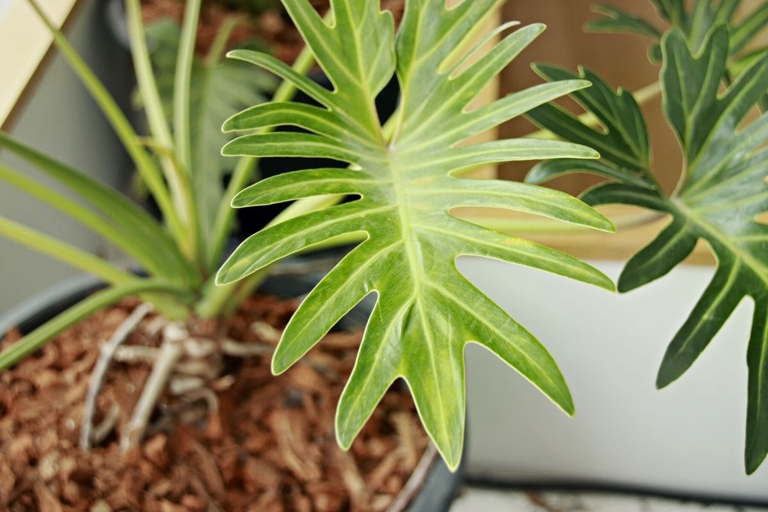
To correct a nutrient deficiency, start by flushing your plant with water. Once you’ve flushed the plant, feed it with a balanced fertilizer that contains all the essential nutrients. This will help to remove any built-up salts in the soil that could be preventing the plant from absorbing nutrients.
In this case, it’s best to consult with a professional to get a diagnosis and treatment plan. If you continue to see yellow leaves, it’s possible that the problem is more serious, such as a fungal disease.
Why Does Philodendron Rose Princess Take So Long To Grow?
Patience is key when it comes to growing a philodendron rose princess – but the results are definitely worth the wait! The plant’s slow growth rate is due to its difficult growing conditions – it requires high humidity, bright indirect light, and warm temperatures. While it may be tempting to rush the process by moving the plant to a more favorable environment, this can actually damage or kill the philodendron. Philodendron rose princesses are a beautiful, unique variety of philodendron that can take up to three years to fully mature.
What’s The Deal With Philodendron’s Pink Princess Being So Pricey?
So what’s the deal with the pink princess philodendron’s high price tag? But be warned – these plants can be quite pricey. If you’re looking for a statement piece for your home, the pink princess philodendron is a beautiful option.
For starters, the pink princess philodendron is a rare plant. It’s not commonly found in nurseries or garden centers, so if you do come across one, it’s likely to be on the pricier side.

If you’re not prepared to put in the work, you’re better off opting for a different plant. Another reason for the pink princess philodendron’s high cost is its care requirements. These plants are notoriously difficult to care for, and require a lot of attention and effort to keep them alive.
Just be sure to do your research and be prepared for the challenges that come with caring for this rare and delicate plant. So, if you’re willing to pay the price and put in the work, the pink princess philodendron can make a beautiful addition to your home.
Why Does The Pink Color of The Philodendron Pink Princess Fade?
If that doesn’t help, you may need to supplement with artificial light. As with most houseplants, the pink color of the Philodendron pink princess will fade if it isn’t getting enough light. If you notice the pink starting to fade, try moving the plant to a brighter spot.
There are a few other reasons why the pink color of the Philodendron pink princess might fade. If the plant is stressed from too much or too little water, fertilizer, or temperature changes, the pink color may fade. Also, as the plant matures, the leaves may become less pink.

If you want to keep the Philodendron pink princess looking its best, give it bright, indirect light and consistent care. With the right care, this beautiful plant will stay pink for years to come.
How Do I Get Variegated Philodendron Pink Princess Back?
It’s possible to get it back, but it will take some effort on your part. Here are a few tips to help you get started: If your Pink Princess Philodendron has lost its variegation, don’t despair.
First, check the light levels in your home. Pink Princess Philodendrons need bright, indirect light to maintain their variegation. 1. If your plant is in a low-light area, move it to a brighter spot.
Pink Princess Philodendrons prefer warm temperatures, so if your home is on the cooler side, try raising the thermostat a few degrees. Next, take a look at the temperature in your home. 2.
These plants like to stay moist, but not soggy. Water when the top inch of soil is dry. 3. Finally, make sure you’re watering your Pink Princess Philodendron regularly.

With a little time and effort, you should be able to get your Pink Princess Philodendron back to its beautiful, variegated self.
Why Does The Philodendron Pink Princess Grow Longer?
While the plant is native to the tropical rainforests of South America, it can be grown in a variety of climates. The Philodendron Pink Princess is a beautiful plant that is known for its long, cascading leaves. The plant is easy to care for and is a great choice for those who are new to plant care. The Philodendron Pink Princess is a fast-growing plant and can reach lengths of up to 10 feet. The Philodendron Pink Princess is a hardy plant that can tolerate a wide range of temperatures and humidity levels. The plant does best in bright, indirect light but can also tolerate low light conditions.
How Big Can The Plant Grow?
The plant can grow up to 3 feet tall and 2 feet wide. The leaves are usually 6 to 8 inches long and 3 to 4 inches wide, but they can grow up to 12 inches long and 6 inches wide. The flowers are white and they grow in clusters.
Is The Philodendron Pink Princess Toxic To Pets?
However, some people may be concerned about whether or not this plant is safe for their pets. The Philodendron pink princess is a beautiful plant that is popular among indoor plant enthusiasts.
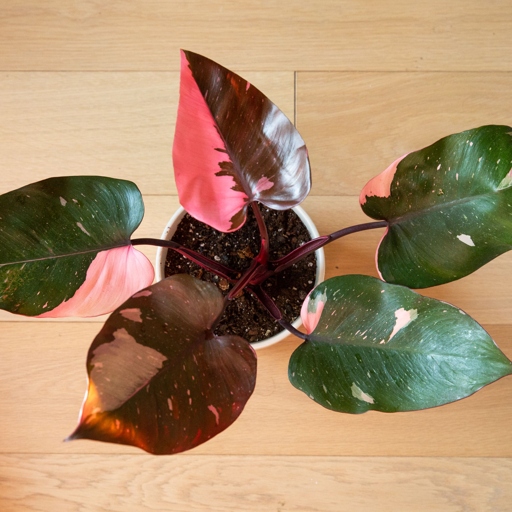
Therefore, it is important to keep this plant out of reach of pets. However, it is important to note that this plant can cause stomach upset if ingested in large quantities. The good news is that the Philodendron pink princess is not toxic to pets. In fact, it is actually considered to be a safe plant for both dogs and cats.
Just be sure to keep it out of reach of your four-legged friends! If you are looking for a beautiful and safe plant for your home, the Philodendron pink princess is a great option.
Can I Grow Multiple Philodendron Pink Princess In The Same Pot?
But can you grow multiple Pink Princesses in the same pot? If you’re looking to add a little bit of color to your home, the Philodendron Pink Princess is a great option.
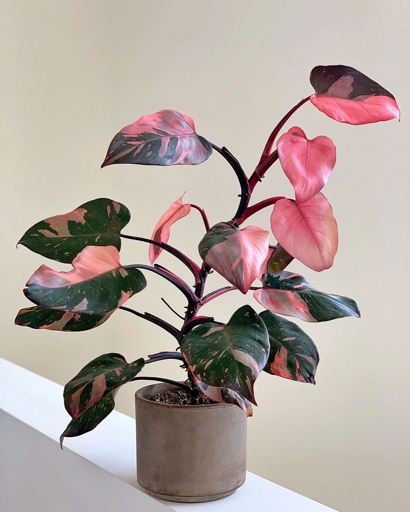
You can absolutely grow multiple Philodendron Pink Princesses in the same pot. The answer is yes! In fact, it’s actually a good idea to do so.
They’re very sensitive to both too much and too little water, and it can be difficult to strike the perfect balance. The reason for this is that Pink Princesses are notoriously finicky when it comes to watering.
If one plant gets too much water, the other plants will help absorb some of the excess. And if one plant gets too little water, the other plants can help share their water. By growing multiple Pink Princesses in the same pot, you can help offset any watering mistakes.
So if you’re looking to add a Philodendron Pink Princess to your home, don’t be afraid to put more than one in the same pot!
Frequently Asked Questions
1. How often should I water my pink princess philodendron?
Water your pink princess philodendron when the top inch of soil is dry. Allow the water to drain completely before adding more.
2. How often should I fertilize my pink princess philodendron?
Fertilize your pink princess philodendron every two weeks during the growing season with a balanced fertilizer.
3. What type of light does my pink princess philodendron need?
Your pink princess philodendron needs bright, indirect light.
4. What type of soil does my pink princess philodendron need?
Your pink princess philodendron needs a well-draining, peat-based potting mix.
5. How often should I repot my pink princess philodendron?
Repot your pink princess philodendron every two to three years.
6. What are some common problems with pink princess philodendrons?
Some common problems with pink princess philodendrons include leaf spot, root rot, and mealybugs.
7. How can I prevent common problems with pink princess philodendrons?
To prevent common problems with pink princess philodendrons, water regularly and fertilize as needed. Also, be sure to provide bright, indirect light and well-draining soil.
8. What should I do if I notice a problem with my pink princess philodendron?
If you notice a problem with your pink princess philodendron, consult a professional or take it to your local nursery.
9. How can I make my pink princess philodendron thrive?
To make your pink princess philodendron thrive, water regularly, fertilize as needed, and provide bright, indirect light. Also, be sure to repot every two to three years and choose a well-draining potting mix.
Final thoughts
If you’re looking for a plant that’s both beautiful and easy to care for, the pink princess philodendron is a great option. With just a few simple tips, you can keep your plant healthy and thriving. Be sure to water it regularly, provide it with bright, indirect light, and give it a monthly dose of fertilizer. With a little care, your pink princess philodendron will be a stunning addition to your home.
